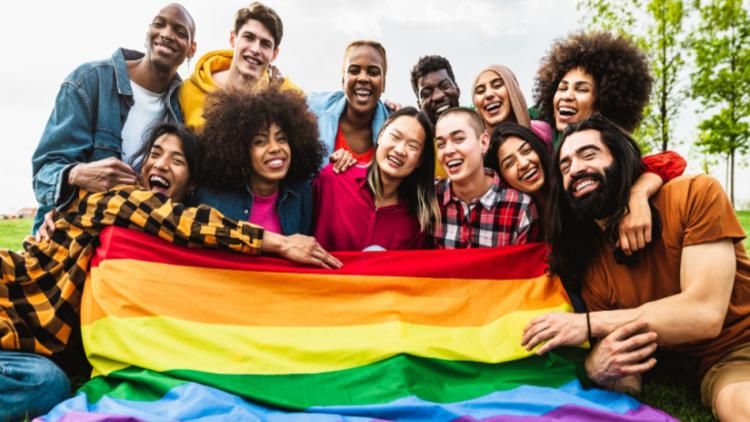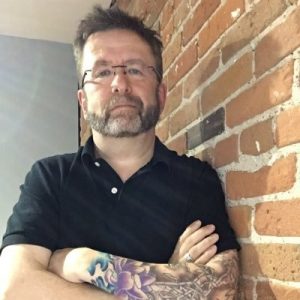LGBTQ+ Americans: History Is on Our Side
Author: Stacie Brensilver Berman and Daniel Hurewitz

This has been a difficult spring for LGBTQ+ Americans, to say the least. State governments and Supreme Court justices seem out to revoke hard-won protections, and seasonal feelings of pride have been subsumed by anger and fear. But let’s not forget that we’ve been at this kind of crossroads before, where the gains of LGBTQ+ activism were threatened by a powerful backlash, and LGBTQ+ rights have won out. And what’s more, this time we have even more powerful tools available to us to challenge the attackers.
Yes, recent events indicate that we are once again at a critical moment for LGBTQ+ rights. Florida’s “don’t say gay” law, passed this March, has inspired more than a dozen other states to consider similar restrictive legislation, banning LGBTQ+ content from school curricula and placing queer and questioning students in peril.
Furthermore, Clarence Thomas’s audacious concurring opinion in Dobbs v. Jackson Women’s Health Organization specifically questions the legitimacy of the Lawrence and Obergefell decisions and puts LGBTQ+ relationships in the crosshairs.
Given that political climate, it’s no surprise that Pride organizers across the nation are worried about opposition protestors and even violence at events meant to celebrate their communities’ vibrancy and accomplishments.
But this is not the first time that gains in LGBTQ+ rights have triggered a legislative backlash, nor that “protecting” schools and children has been used as a strategy to justify homophobic legislation. Across the 1970s, dozens of cities and states repealed laws criminalizing same-sex intimacy and passed laws protecting LGBTQ+ Americans. In response, in 1978, California state senator John Briggs sponsored a proposition that would have prohibited queer teachers from working in public schools. While California voters turned down the Briggs initiative, Oklahoma did pass an anti-LGBTQ+ curriculum law that year. As of this spring, four states maintain similar laws.
But when we look at the history of the 1970s, these backlash laws were only the B-plot to a much larger story: Anti-discrimination laws, policies, and attitudes steadily took hold around the country and allowed LGBTQ+ life to flourish. While there was resistance, and corners of opposition, the larger national sweep was towards greater acceptance and care for LGBTQ+ Americans, and particularly to create safe and inclusive learning spaces. Briggs’ B-plot did not win.
The movement towards acceptance continues today. Despite the media focus on Florida’s legislation, as of June seven states have laws mandating the inclusion of LGBTQ+ topics and themes in academic content areas. California passed the nation’s first such law in 2011, and in just the last few years, New Jersey, Oregon, Illinois, Colorado, Nevada, and Connecticut followed suit, with countless organizations, museums, and universities joining the effort to convert those legislative mandates into classroom realities.
Additionally, cities and counties outside of those seven states have established official support for curriculum projects designed to promote LGBTQ+ education. Massachusetts’s educational framework, revised in 2018, offers teachers the option of including the Lavender Scare, Bayard Rustin, and 20th- and 21st-century LGBTQ+ activism in their social studies classes. In Maryland, Montgomery County Public School officials declared their support for inclusive curriculum across content areas as the state legislature entered into debates over a statewide mandate in 2019. Moreover, the New York City Department of Education worked with the National Archives, the New York Historical Society, the Museum of the City of New York, and the New York Public Library to develop its Hidden Voices curriculum – on which both of us collaborated– which it published and made available to schools in 2021.
All of which to say, there is a movement underway today and it is driving toward inclusion.
And importantly, curriculum is a powerful tool in that movement. As GLSEN’s research consistently shows, students who experience inclusive curricula and positive representations of the LGBTQ+ community – whether in their English or history classes – become more aware and accepting of themselves.
Certainly, part of the significance of these lesson plans is that they help queer students see themselves reflected in world culture and history. But just as important, inclusive class content generates inclusive school cultures. Non-queer students who learn about LGBTQ+ individuals in history and literature become more tolerant themselves. And they become advocates for a more inclusive society.
Education, then, is how we fight back. There are a bevy of lesson plans and curriculum guides now available. We fight back by celebrating and supporting the teachers and school districts that are already using them and doing this work. And we fight back by encouraging and demanding more districts to follow their lead. That’s a vital weapon in defeating the B-plot this time around.
Students around the country recoiled in the face of “don’t say gay” laws and laws that discriminate against transgender students. In Florida, they walked out of their classrooms as the state legislature debated the bill; elsewhere they offered impassioned pleas in legislative sessions underscoring the value they place on their and their peers’ identities and self-expression. Their protests show how much students understand the power of their voices.
We need more voices to join theirs. We need more teachers “saying gay and trans” in schools, and more leaders paying attention whenever young people are being shamed and their rights stripped away.
A larger movement is underway – one of greater acceptance and understanding – and we all need to be a part of that story.
Stacie Brensilver Berman is a Visiting Assistant Professor in the Social Studies Education program at NYU, the author of LGBTQ+ History in High School Classes in the United States since 1990, and a former New York City public school teacher.
Daniel Hurewitz is an Associate Professor of History at Hunter College and a Special Advisor to the President for Student Success.
Views expressed in The Advocate’s opinion articles are those of the writers and do not necessarily represent the views of The Advocate or our parent company, Equal Pride.
Original Article on The Advocate
Author: Stacie Brensilver Berman and Daniel Hurewitz




